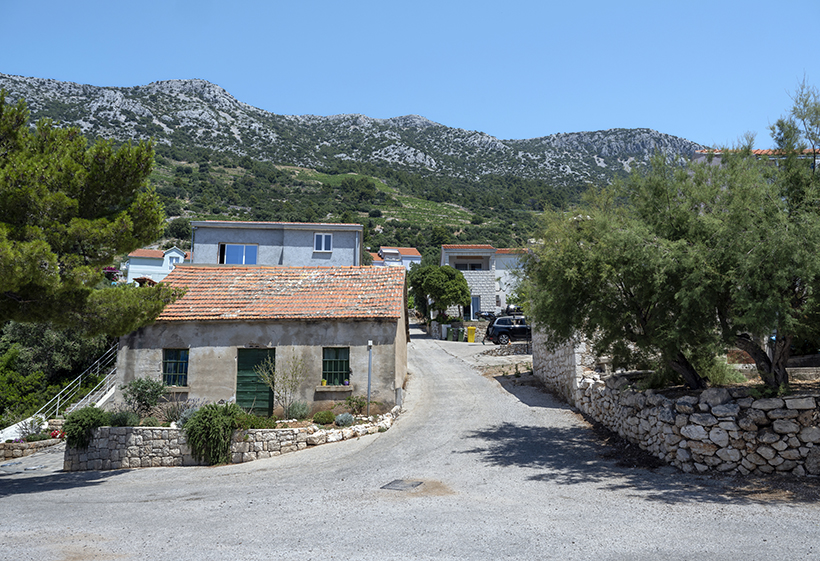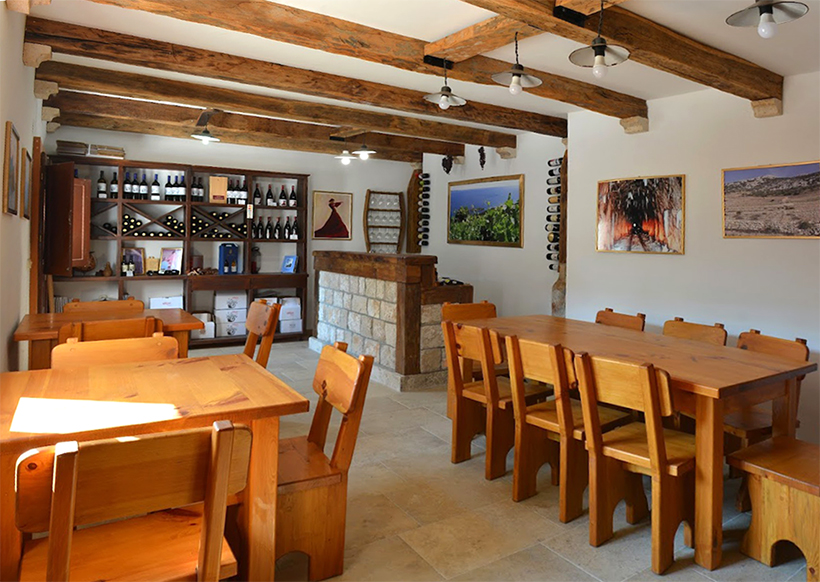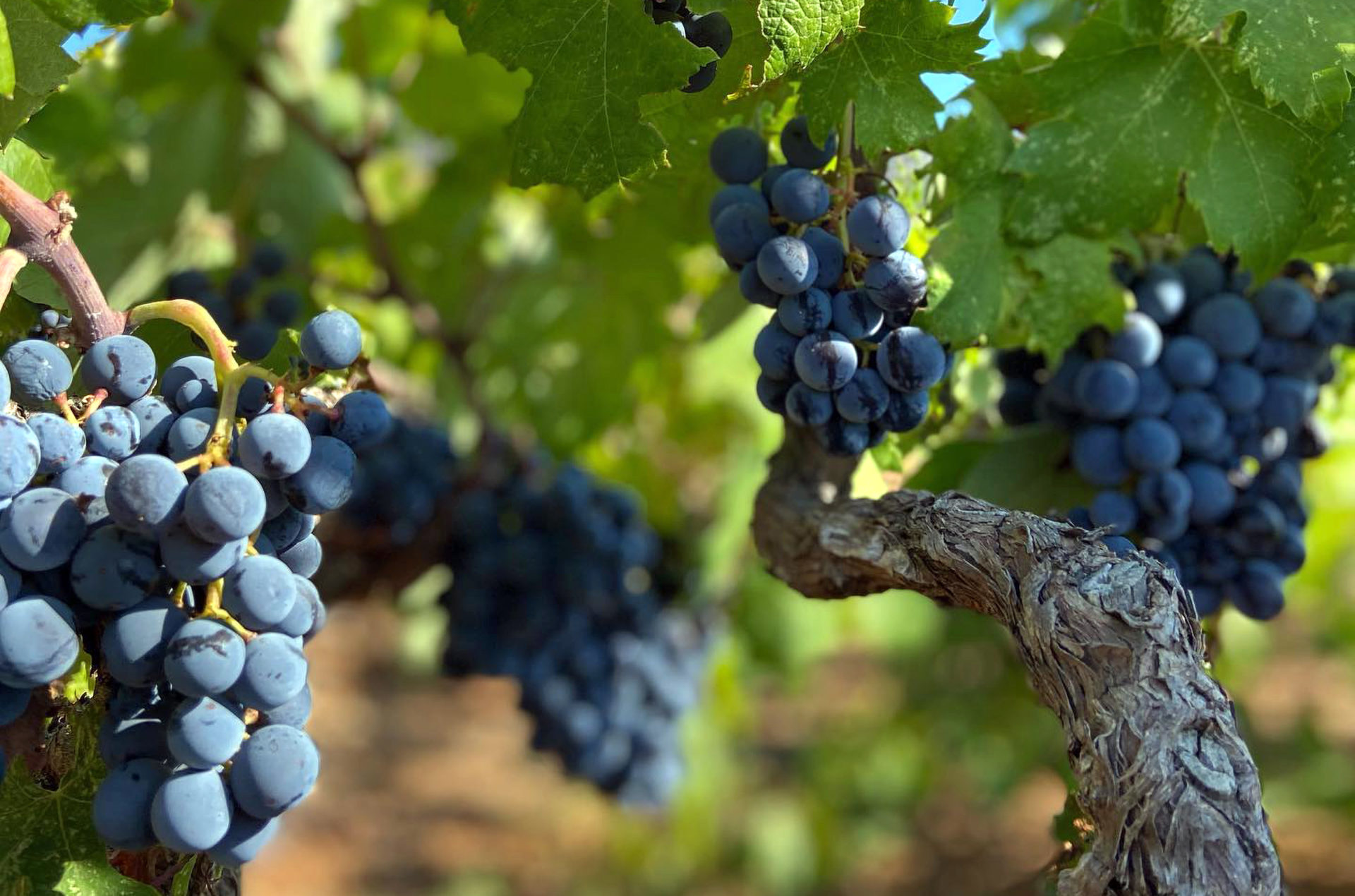A winery tasting is, when you think about it, a very peculiar exercise, with a lot of situational subjectivity. Maybe you’re vacationing in a place you’ve been dreaming about for months, being poured glass after glass of wines with fancy labels in an atmospheric room. Or maybe you’re tasting just a couple of wines in a tiny cellar you found on the road, as a filler in your schedule en route to another destination. The tasting could be conducted by the producer themself, and they’ll go out of their way to explain their philosophy and have you try as many wines as possible, from bottles or still in barrels. Or that producer might be in a clear hurry to get back to their family meal / favorite TV show / afternoon nap. Or your guide could have been hired only yesterday as seasonal help, with strict instructions not to go beyond the three tiny pours that customers pay for. Obviously, these scenarios are all likely to alter your judgment of the wines.
Then there’s the order of the tasting itself. In a single sitting, you’re going to try three, five, perhaps twenty wines in a specific order decided by your host. Do you really think you have an objective opinion of your twentieth glass, especially if you’re not spitting? And what happens when you drink the tenth wine on its own, without comparing it to the nine that came before it? If you buy anything at the winery, chances are you will never reproduce the same tasting. Worse, once your vacation ends and you’re back home, that bottle you open while you’re rushing to make dinner after a long day of work might taste quite different from what you remember.
Pretty much all of the above experiences were at play with one winery or another during my trip to the Pelješac peninsula. With eight bottles of red wine on my table, it’s now time to see what they’re really worth!

The wines
I selected eight red wines, all from different wineries: six that I’ve visited and mentioned in my previous posts, in detail or in passing, plus two that were recommended to me but which I didn’t have a chance to visit in person. All the wines are made from Plavac Mali, and six of them bear the Dingač Protected Designation of Origin while two contain a blend of grapes from Dingač and other parts of the peninsula.
Trying to be as objective as possible, I ran four blind tastings: two with four wines each, then one with the best four from the those and one with the worst four (still not knowing which wine was which; my partner had a lot of fun keeping me in the dark, so to speak). I of course tried the wines on their own, but I also tasted them with two quintessential red-wine-pairing foods: charcuterie and cheese.
Here’s the full list of wines:
Daničić-Kačić Dingač Barrique 2019
Grgic Plavac Mali 2016
Kiridžija Dingač 2019
Korta Katarina Reuben’s PR 2011
Matković Dingač 2020
Matuško Dingač Royal 2011
Ponos Dingač 2019
Saints Hills Dingač 2017
The winners
Looking at my top 4 wines, fourth place goes to Matković. The nose of the 2020 Dingač is quite mellow at first, with some vanilla and berries. Soon after, I smell cooked berries and prunes; then as the wine opens up, the vanilla dominates more and more, in various forms: vanilla yogurt (maybe with berries at the bottom), cream soda, vanilla dessert… In the mouth, the wine feels smooth, buttery, and more full-bodied than I expected, with flavors of cooked fruits that, again, progressively make room for the vanilla. It goes okay with prosciutto and cheese, though the latter seems to accentuate the vanilla even more. It’s a quite good wine, but not as interesting as my top 3.

We have a tie between Korta Katarina and Daničić-Kačić for second place.
The Korta Katarina wine, from 2011, proved to be very close to what I remembered from my visit. You can tell from the slightly darker and less vivid color that it’s a wine that has several years of aging, but it has not passed its prime at all. On the first nose, I immediately smell that it’s going to be full-bodied, with obvious aromas of dark fruit. The second nose reveals raspberry, leather, maybe licorice, and finally some vanilla. You can tell it differs from a typical Dingač (it’s a blend, with half of the grapes coming from Postup). On the palate, the wine is well-balanced and has a bit more acidity than others, with noticeable but soft tannins. It goes reasonably well with charcuterie and cheese, but I prefer it on its own. At $70 a bottle, this is the most expensive entry on my list.
The big surprise, though, is Daničić-Kačić, a place so small that it has no web presence and isn’t even mentioned on online maps. The 2019 Dingač Barrique also boasts a pronounced first nose, with dark berries and noticeable alcohol. Then the flavors become jammy, maybe with cherry and blackberry, and chocolate later joins the bouquet. The wine exhibits mild tannins and a good (but not excessive) acidity. The aromas on the palate confirm the nose, something like a chocolate yogurt mixed with berries. And it turns out to taste even better with the food! I would hazard a guess that it has limited aging potential, but for drinking now, this is a very nice wine indeed – and it was sold for a mere $14 at the winery.

Finally, the top prize goes to Ponos. One of the two wineries I didn’t visit! Bummer! This too is a big surprise – a tiny winery, with no web presence other than a Facebook page, and no published address – I tried in vain to find it on my own while driving around Potomje (eventually I was able to contact the owner, who told me he couldn’t receive guests anyway because he was out of town at the time.) Ironically, Ponos was recommended by our guide at Korta Katarina, and now I understand why. The nose on this 2019 Dingač takes a little while to open up; then berries become noticeable and keep gaining in intensity to yield a very fruity nose, where I single out raspberry and passionfruit among others. Very interesting! Similarly, the first taste suggests a nice wine but one that’s not particularly distinctive and a bit flat. Then after a few minutes it becomes full-bodied, with some well-balanced acidity, and before I know it, it becomes clear that this is the best of the lot. I recognize berry preserves and a hint of chocolate and vanilla. It’s the longest on the palate. And it goes well with the charcuterie and cheese.
The others
Matuško is my favorite of the other 4 wines. It reminds me a lot of an Italian Amarone, as there’s a lot of jammy berry on the nose. But then the vanilla and chocolate kick in, and soon there’s too much chocolate on the nose and too much sweetness on the palate, without acidity or tannins to keep them in check. I almost feel like I’m drinking a chocolate martini. This is a good example of a tasting that progressively takes you to an extreme winemaking style (more and more concentrated wines aged for longer and longer periods) that you may not appreciate as much when you try the wines out of this context.
The Kiridžija Dingač is pleasant but quite mild, with classic notes of red berries and vanilla.
The Saints Hills Dingač exhibits some dark berries, some earthy notes, maybe a little bit of leather, but I find it much too tannic to be drunk right now. All I can taste now is the tannins.
Unfortunately, I wasn’t able to evaluate the Grgić Plavac Mali properly, as the bottle I purchased was flawed: it smelled earthy and dusty, tasted very tannic, and was generally unpleasant. From previous experience inside and outside of Croatia, I know this isn’t what Grgić Plavac Mali is supposed to be like. I suspect this bottle was very poorly stored. Since it’s really not that widely available and costs $40 a pop, I didn’t attempt to buy it again.
Well, these results aren’t at all what I expected! Here’s an anecdote: during the blind tastings, I tried to guess which wine was which, and managed to correctly identify only one out of eight (Korta Katarina). I thought the worst wine would be the one from Daničić-Kačić, and the best wine would be the one from Grgić! Regardless, there’s a common Dingač profile that emerges from all these tasting notes: a bouquet of jammy berries (raspberry, blackberry, cherry), vanilla, and chocolate, that the best wines balance with the right acidity and some tannins. Now I just need to fly back to Croatia to visit Ponos winery!
The featured picture and the other photos of Ponos are taken from the winery’s Facebook page. The photo of Matković comes from their web site.






